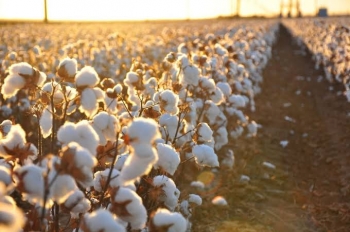News And PoliticsCommunications And EntertainmentSports And FitnessHealth And LifestyleOthersGeneralWorldnewsBusiness And MoneyNigerianewsRelationship And MarriageStories And PoemsArts And EducationScience And TechnologyCelebrityEntertainmentMotivationalsReligion And PrinciplesNewsFood And KitchenHealthPersonal Care And BeautySportsBusinessFamily And HolidaysStoriesIT And Computer ScienceRelationshipsLawLifestyleComedyReligionLifetipsEducationMotivationAgriculturePoliticsAnnouncementUSMLE And MedicalsMoneyEngineeringPoemsSocial SciencesHistoryFoodGive AidBeautyMarriageQuestions And AnswersHobbies And HandiworksVehicles And MobilityTechnologyFamilyPrinciplesNatureQuotesFashionAdvertisementChildrenKitchenGive HelpArtsWomenSpiritualityQuestions AnsweredAnimalsHerbal MedicineSciencePersonal CareFitnessTravelSecurityOpinionMedicineHome RemedyMenReviewsHobbiesGiveawayHolidaysUsmleVehiclesHandiworksHalloweenQ&A
Agriculture
profile/9761IMG_20200218_221142_875.jpg
RachaelB

Ebonyi Rice Farmers Helpless As Herdsmen, Cows Destroy Their Farms
~3.3 mins read
EDWARD NNACHI writes that the unending crisis between herdsmen, whose animals destroy produce, and farmers in Ebonyi State poses serious threat to food security in the state and its environsForty-nine-year-old Ibiam Uchenna-Ogbuewu, a native of Ebunwana Edda community in the Afikpo South Local Government Area of Ebonyi State, alternates between conveying passengers on his commercial motorcycle and his rice farm in order to make ends meet.Uchenna-Ogbuewu has three hectares of rice farm in Oso Edda community. And with the proceeds from the farm, he operated a hitherto popular pub in Amasiri taking care of his wife, five children and aged mother.Before now, the children’s school fees were paid with ease and other family financial obligations met easily. But currently, Uchenna-Ogbuewu’s situation has changed for the worse. Today, the farmer’s health is challenged, bills are piling up and the flame of his once popular pub is ebbing out.He narrates, “It all started around November 2019 as I was preparing to harvest rice from my farm in the Oso Edda community, when I noticed that Fulani herdsmen had destroyed about two out of the three hectares the night before.“On getting to the farm that morning, I discovered that herdsmen had entered the farm the previous night and their cows had trampled on the ripened rice. For some minutes, I wept and asked them why they did this kind of thing, because they were still on the farm and were very relaxed. One of them said I better shut up my mouth or they would beat me up. As I was talking to the other, another one was already bringing out his dagger to attack me.“I went back to the village and called a photographer, who came and took photographs of the scene. Later, I told the women, who came to harvest the rice, to go back home, because there was nothing to harvest again.“I went to Afikpo and complained to a known Fulani leader, who promised that they would compensate me, but till date, that compensation has not come. That was the beginning of my problem. I invested about N1m, which I borrowed from a microfinance bank, in the farm and I have not been able to pay back the loan or the interest. I can’t fund my pub anymore and I equally can’t take care of my family and my health is now in a bad state because of high blood pressure.â€Uchenna-Ogbuewu, who said he had suffered so much psychological and financial pains in the hands of the Fulani herdsmen, called on the government at all levels to intervene.According to him, if nothing is done to arrest the situation, acute hunger and starvation may hit the land.The story of a 54-year-old farmer and native of Enohia Itim community in the Afikpo North LGA of the state, who spoke to The PUNCH on condition of anonymity, is not different.She said farming, which used to be fun for the natives, had become uninteresting among the people, noting, “You are not sure if what you are spending time, energy and resources to plant will survive destruction by herdsmen and their cattle.“We are really suffering in this land with regard to what these cattle herders do here. They destroy our crops; they threaten our people and most times, rape our women. It is this bad and there is a need for this to stop and I call on the government to do something about it. Our farms and produce are being destroyed.â€
profile/5309IMG_20181126_191303.jpg
Ematy1

FIBRE CROPS
~2.3 mins read
Fiber crops are field crops grown for their fibers, which are traditionally used to make paper, cloth, or rope. Fiber crops are characterized by having a large concentration of cellulose, which is what gives them their strength. The fibers may be chemically modified, like in viscose (used to make rayon and cellophane). In recent years, materials scientists have begun exploring further use of these fibers in composite materials. Due to cellulose being the main factor of a plant fibers strength, this is what scientists are looking to manipulate to create different types of fibers.
Fiber crops are generally harvestable after a single growing season, as distinct from trees, which are typically grown for many years before being harvested for such materials as wood pulp fiber or lacebark. In specific circumstances, fiber crops can be superior to wood pulp fiber in terms of technical performance, environmental impact or cost.
There are a number of issues regarding the use of fiber crops to make pulp. One of these is seasonal availability. While trees can be harvested continuously, many field crops are harvested once during the year and must be stored such that the crop doesn't rot over a period of many months. Considering that many pulp mills require several thousand tonnes of fiber source per day, storage of the fiber source can be a major issue.
Botanically, the fibers harvested from many of these plants are bast fibers; the fibers come from the phloem tissue of the plant. The other fiber crop fibers are hard/leaf fibers (come from the entirety of plant vascular bundles) and surface fibers (come from plant epidermal tissue).
Before the industrialisation of the paper production the most common fiber source was recycled fibers from used textiles, called rags. The rags were from ramie, hemp, linen and cotton.
A process for removing printing inks from recycled paper was invented by German jurist Justus Claproth in 1774. Today this method is called deinking. It was not until the introduction of wood pulp in 1843 that paper production was not dependent on recycled materials from ragpickers.
To have a source of fiber to utilize in production, the fiber first must be extracted from the plant. This is done in different ways depending on the fiber classification. Bast fibers are harvested through retting which is where microbes are utilized to remove soft tissues from the plant and only the useful fibrous material remains. Hard fibers are harvested mainly through decortication which is where the non-fibrous tissues are removed by hand or machine. Lastly, surface fibers are harvested through ginning which is where a machine removes the fibers from other plant material.
The cotton fibres are obtained from the seeds of the cotton plant. It is known as the fabric of life, as it is less of cost, most common type of fabric, easily available, extremely durable, easy fabric to take care of and good for our environment. It is widely used worldwide to make different clothing like shirts, trousers, and other materials.
Jute is a long, soft, shiny fibre obtained from vegetables. Jute fibres have been an integral part of the culture of West Bengal, and some portions of Bangladesh. They are mainly composed of cellulose and lignin.
profile/4741WIN_20180210_102927profilepix.JPG
Judeeyo

Carrot
~1.5 mins read
Carrot, (Daucus carota), herbaceous, generally biennial plant of the Apiaceae family that produces an edible taproot. Among common varieties root shapes range from globular to long, with lower ends blunt to pointed. Besides the orange-coloured roots, white-, yellow-, and purple-fleshed varieties are known.
Carrot, (Daucus carota), herbaceous, generally biennial plant of the Apiaceae family that produces an edible taproot. Among common varieties root shapes range from globular to long, with lower ends blunt to pointed. Besides the orange-coloured roots, white-, yellow-, and purple-fleshed varieties are known.
Fresh carrots should be firm and crisp, with smooth and unblemished skin. Bright-orange colour indicates high carotene content; smaller types are the most tender. Carrots are used in salads and as relishes and are served as cooked vegetables and in stews and soups.
Advertisement
Loading...
 RachaelB
RachaelB
 Ematy1
Ematy1